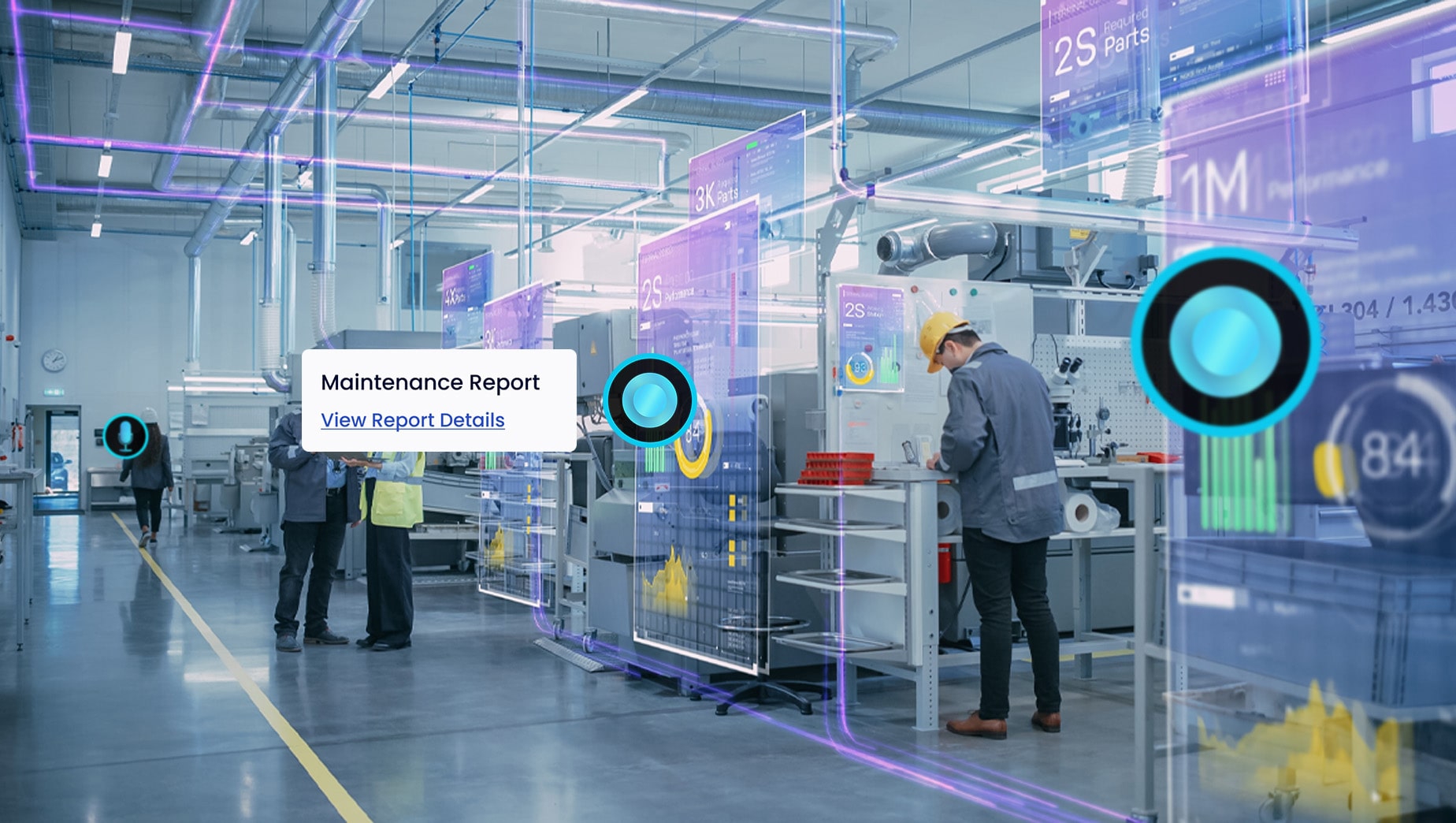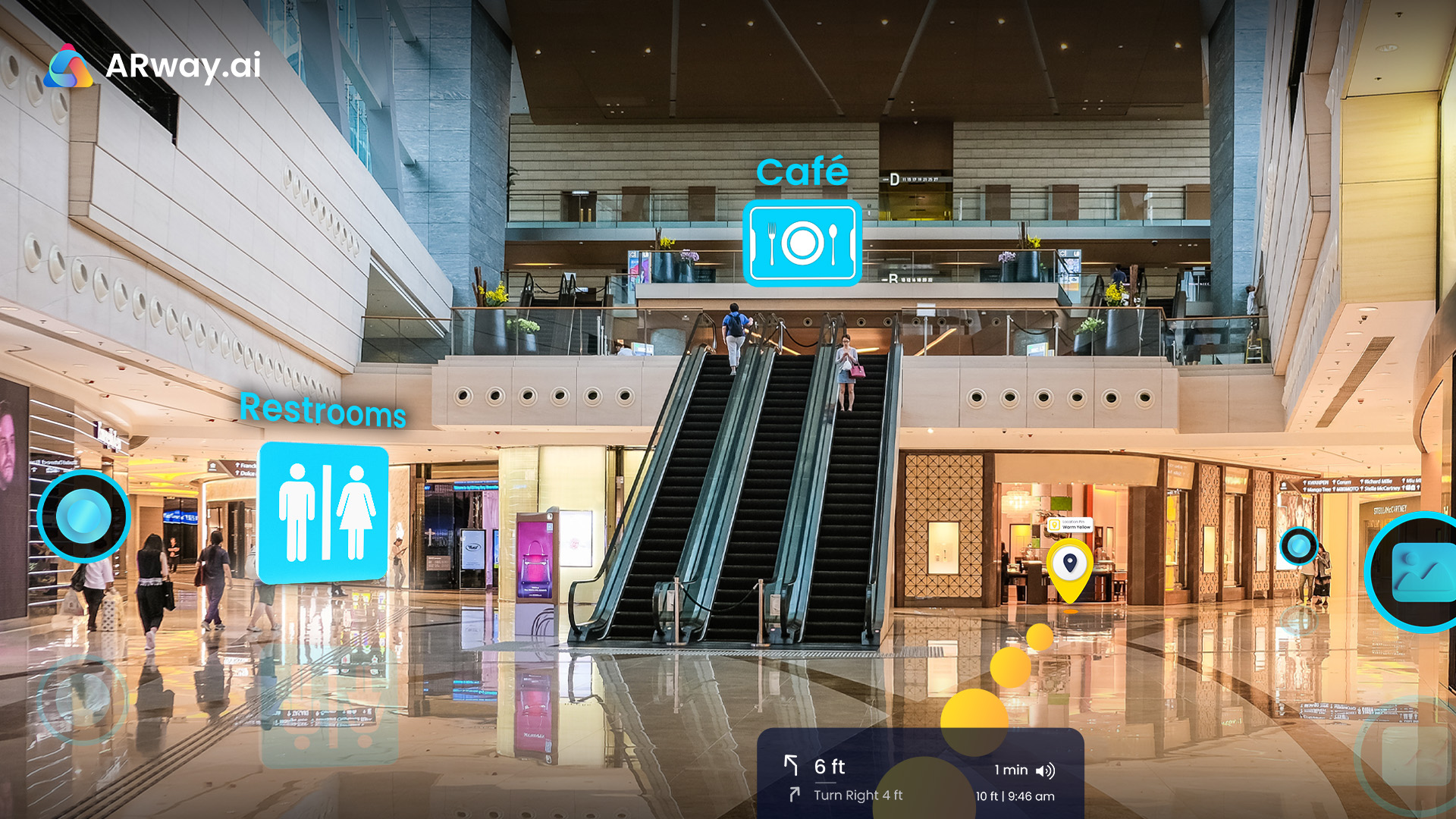Re-Inventing the Stadium Fan Experience
Heading over to a stadium for the night to see your favorite sports team battle it out or an artist perform can oftentimes be a once-in-a-lifetime experience. Yet that special experience shouldn’t be limited to only when a fan is in the stands.
A Fan Engagement survey conducted by Deloitte in 2018 revealed that one of the four factors of a good in-stadium fan experience, which outweighs other factors by over 50% is an exciting atmosphere within the stadium, so venue owners ought to be looking into how to provide a complete end-to-end experience from the moment fans enter the parking lot to their exit.
To go above and beyond, augmented reality (AR) wayfinding and immersive spatial activations are some of the best ways to reinvent the stadium fan experience by transforming the common fan difficulties into something exciting.
Let’s dive deep into how indoor AR navigation (MetaMaps), location-based AR experiences (Spatial), and location-based analytics (Location Intelligence) can improve the experience and engagement of fans while also driving revenue for the stadium and its sponsors.
How AR Indoor Navigation in Stadiums Improves the Fan Experience
Improve Fan Navigation in Venues

Attending a stadium event tends to involve a lot of planning to not miss out on anything. Where is, and how much parking is available? Or, when’s the best time to get out of your seat and look for the nearest restroom?
Fans typically rely on a 2D map or wander around the stadium to get the answer to these types of questions. But as they’re walking around and trying to navigate a large and complex venue, a static map simply isn’t reflective and can’t keep up with a moving fan, leading to unnecessary stress and frustration. The earlier-mentioned Deloitte Fan Engagement survey found that one of the main factors that bring down the in-stadium fan experience the most is poor navigation within the stadium.
77% of smartphone users rely on navigation apps and 71% of people report experiencing better navigation with AR. This type of navigation is 2 times faster than typical, 2D signage-based navigation, and provides step-by-step navigation leaving no room for getting lost. A fan can use their phone to locate their seats or nearest restroom by following an AR-powered navigation path, thus dramatically improving their overall experience navigating the complex venue.
Higher Discoverability of Stadium Vendors
Once a fan finds their seat, they’re most likely wanting to stay in the nearby vicinity so it’s easy to get back, and again, to not miss out on anything exciting. If a fan doesn’t know their way around and what vendors are nearby, they won’t be willing to venture out and discover what a stadium has to offer.
Boost fans’ awareness as they’re using AR wayfinding by providing a directory within the experience. That pizza they’re craving is a click away and as it turns out, is nearby. Or, highlight souvenir shops to add to the memorable experience.
Increase the Level of Safety in Stadiums
Indoor mapping not only boosts the accessibility of a stadium, but also makes it a lot safer. As fans are already immersed in a stadium’s digital map, exits, and emergency exits can be localized and highlighted to make sure they’re aware and informed in case any issue arises.
Should an emergency happen, the quickest and safest route to a fan’s actual position can direct them for proper evacuation out of the building.
Spatial and Location-Based Marketing to Increase Engagement and Drive Revenue in Stadiums
What is Location-Based Marketing?

Location-based marketing empowers a stadium to target its fans at an incredibly personal level. Based on their physical location and location data as fans navigate an indoor map, a marketing team can reach specific fans based on their proximity to a merchandise store or food vendor.
Venues can employ geofencing and geotargeting to increase foot traffic to concession stands. For example, as soon as a fan enters a specified area, their phone gets an alert with a special offer, coupon, or reward to entice that fan to purchase a vendor nearby. Consumers are becoming more inclined to instant gratification. The ability to instantly click and connect within the wayfinding experience boosts a fan’s satisfaction and happiness as they navigate.
Location-Based Augmented Reality

Stadiums must make the trip fans take to their venue worth it through personalized, unique entertainment. AR presents an opportunity to expand the amount of content a stadium can offer in addition to more monetization opportunities for sponsors and brands.
As fans point their camera at their current surroundings, they can see AR spatials emerge and call for engagement and interaction. Stadiums can go beyond a venue’s physical limitation through interactive holograms of players and coaches, AR scavenger hunts, and other forms of AR entertainment to expand the fan experience.
Sponsors can up their marketing game through engaging AR activations and location-based marketing to grow revenue. As The Drum reports, AR can capture people’s attention for over 85 seconds, increase interaction rates by 20 percent, and improve click-through rates to purchase by 33 percent.
One of the most impressive success stories of AR used in marketing is Pepsi’s installation of AR technology into a London bus shelter in 2014, making it appear as if a lion, UFOs, flying saucers, and other objects were headed straight for Londoners. The experience resonated with people so much that they naturally wanted to share it with their friends on social media, and as a result, the campaign attracted over six million views on YouTube – making it one of YouTube’s most viewed advertising campaigns.
Drive Consumers Away From the Competition
AR-powered wayfinding turns a fan’s experience at your stadium into something they want to repeat and rave to everyone about. Easy navigation combined with personalized AR marketing is a surefire way to stand out when competing with other stadium’s technological innovations. 86% of people are willing to pay more for a better experience, meaning as a fan is immersed in the digital map, they’re more likely to spend money at merchandise stores and food vendors.
Static and Real-Time Location & User Insights to Impact the Bottomline for Stadium Owners, Vendors and Sponsors

Real-Time and Location-Based Insights
Rather than taking a stab in the dark and guessing what fans might need to know or are possibly interested in, the real-time and location-based insights from indoor wayfinding empower stadium owners to make data-driven decisions. Track searches and what most of the location selections are to see high-traffic areas. By studying how fans move around the venue, stadium operators can optimally place food stalls, merchandise stands, sponsored AR content, and more where they’ll get the most impact. For fans, they can check the crowd level of the entrance gates and move to a more convenient spot. Once they’re inside, they can also monitor lines for restrooms and food and drink stalls
Attract and Retain Sponsors
The ability to be strategic when leveraging indoor mapping data analytics is a huge boost to improve the value proposition to sponsors. If facility and property management can see that a majority of fans tend to gather on a specific side of the stadium, then this area would become the best place to improve the timing and delivery of marketing campaigns. The impact of the messaging and return results leads to greater effectiveness with proximity-based marketing campaigns.
Interested in implementing an indoor mapping system for your stadium? Contact us here today.







